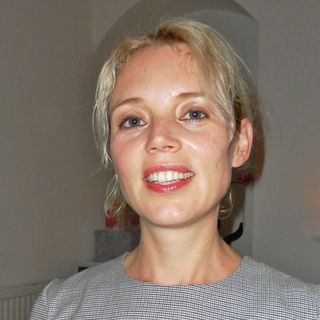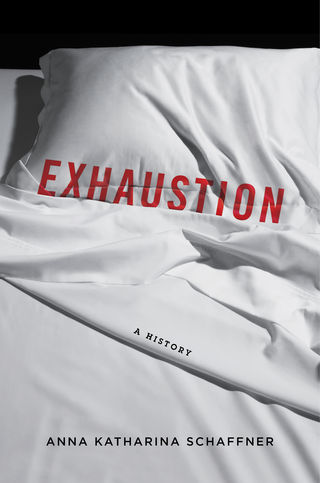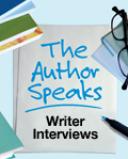Burnout
Exhaustion: A History
The Book Brigade speaks to literary critic Anna Katharina Schaffner, Ph.D.
Posted June 7, 2016

We are not the only culture to struggle with “the demon of exhaustion,” and the struggle is not limited to modern times. The condition was known to different eras by different terms—neurasthenia, exhaustion, burnout. It is part of the eternal struggle to conserve our personal resources.
Every generation seems to believe it is the most exhausted in history. We’re no different. But are we right?
Every age battles with its own historically specific challenges. Anxieties about exhaustion, and the loss of physical and mental energies, are present both in fiction and in the medical, theological, and philosophical literature from classical antiquity onwards. Exhaustion is a timeless concern related to fears about death, illnesses, and the gradual waning of our energies as we age.
So, yes, ours is an exhausting age, and there is much to justify debates about burnout, work-life balance, and how other cultural factors affect our energy resources. But ours is by no means the only age that has had to struggle with anxieties about technological, political, and cultural change.
I disagree with the nostalgic romanticization of the past to which many theorists of burnout and depression implicitly subscribe—the belief that in the premodern era, or even in the 19th century or the first half of the 20th century, people lived less exhausting lives. Each age has to face its own historically specific challenges, including war, pestilence, famine, primitive medical care, long work days in factories under appalling health and safety conditions, and more. Without wishing to diminish the significance of psychological suffering in the late 20th and early 21st centuries, I believe that in some respects we are lucky that our concerns are now predominantly psychosocial in nature.
It seems that some people, today and in the past, have taken great pride in their exhaustion. Why do some of us feel the need to boast about the demands on us?
Whether or not people take pride in their exhaustion depends on how it is seen. Burnout-related exhaustion, for example, revolves around the concept of chronic stress that eventually takes its mental and physical toll. The implications of a burnout diagnosis are that people have spent all their energies, and more, at work. In other words, they were too hard-working, too conscientious, too caring, too committed—all of which are essentially viewed as positive attributes.
Moreover, a burnout diagnosis implies that there are external, work-related reasons for one’s exhaustion, as opposed to complex internal, psychological factors, as is often the case in depression. Depression is still much more stigmatized than burnout. Being able to blame one’s exhaustion on external factors such as work allows sufferers to keep their sense of self intact: It is the outside world—the organization or even the political system—that is at fault. In depression, by contrast, which also counts severe physical and mental exhaustion among its symptoms, the anger is turned inwards: It is the self, not external circumstances, that are to blame. The depressed use up most of their energies in internal conflicts, and feelings of shame and guilt tend to prevail.
In the past, melancholia and then neurasthenia—which, just like burnout and depression, count mental and physical exhaustion among their many symptoms—were also viewed as diagnoses with positive connotations. At the end of the 19th century, neurasthenics were typically thought to be "brain workers," often "captains of industry," or people with literary and artistic inclinations, whose sensitivity, intelligence, and fragile nerves meant that they were suffering from constant stimulation-overstrain. A neurasthenia diagnosis was originally a mark of refinement, of being cultured. In classical antiquity and also in the Romantic era, melancholics were often associated with exceptionality, creativity, intelligence, and even genius. Acedia, by contrast, which is the theological version of melancholia, was considered a grave sin in the Middle Ages, a condition owing to a weakness of the will, indicative of weak faith and a generally depraved mental attitude.
Is burnout something new in the human condition?
Burnout is usually defined by three main symptoms—exhaustion, a cynical attitude towards the organization or people with whom one works, and loss of engagement. The mental and physical symptoms of exhaustion play a key role in various past and present diagnoses, including acedia, melancholia, neurasthenia, depression, and chronic fatigue syndrome. In each symptom cluster, exhaustion is combined with different accompanying symptoms—with fear and causeless sorrow in the case of melancholia, for example.
What is unique about burnout is that it is mainly seen as a work-related ailment resulting from chronic stress, and often also as a condition specific to neoliberal technocapitalism. In the past, by contrast, exhaustion has been explained as a biochemical imbalance, a somatic ailment, a viral disease, or a spiritual failing. It has been linked to loss, the alignment of the planets, a perverse desire for death, and social and economic disruption.
The burnout model also draws on the hormonal conception of stress—the idea that chronic psychological stress can trigger the same fight-or-flight response as physical threats to our well-being. If we are chronically stressed, the levels of adrenalin and cortisol, which are normally pumped into the bloodstream to release emergency energy, are continually high, and they weaken or repress our immune systems, which can lead to all kinds of physical illnesses.
So I do not think that any of the symptoms of burnout are new. Irritability, and even misanthropy, were also symptoms that were attributed to melancholia and neurasthenia. Loss of engagement is just another way of describing hopelessness, lethargy, weariness, and so on, all of which have been features of exhaustion syndromes in the past. What is new is to consider exhaustion, a cynical attitude toward the organization or toward the people with whom one works, and loss of engagement as a syndrome in its own right, and also the belief that these symptoms are caused predominantly by external occupational factors.
You tie our concept of exhaustion to our exhausting of the natural environment. What’s the connection for you?
The concept of exhaustion means that a limited quantity of something—usually something non-renewable—is used up in its entirety. In the context of mental and physical exhaustion, the entity that is being depleted is human energy. Current ecological debates about sustainability center around the idea that our planetary resources are being depleted at an ever more rapid rate, and that a critical point is being reached such that the planet will not be able to replenish them or repair the ecological damage. The greatest threat now is a terminally exhausted planet, a habitat that has become uninhabitable because it has been stripped of its vital resources, just like a worn-out human body. What is unique to our age is that the fear of exhaustion has for the first time been extended beyond the individual or the social to the environment. And unlike other anxieties about exhaustion, the threat of the irrevocable exhaustion of our environmental resources is one that would include everyone, young and old.
What led you to write this book?
Like many people, I have battled with many of the symptoms of exhaustion at various times in my life. And I have always found it helpful to read accounts of others who feel the same way, especially those from different historical periods. I almost studied psychology rather than literature at university, and also considered training as a psychoanalyst. I find psychoanalytical approaches persuasive, although I think they are at their strongest when combined with analyses of historical and cultural factors.
While I was working on Exhaustion, I also wrote a novel called The Truth About Julia (Allen & Unwin, 2016), which is about political disillusionment and how it can lead to radicalization. My main character, journalist Clare Hardenberg, is burned out, weary, depressed, and utterly disenchanted with what she perceives as the meaninglessness of her work and the inefficacy of traditional modes of political activism. She worries about the power of words to change the political status quo, and she falls under the influence of a dangerously charismatic terrorist.
What is the most surprising thing you discovered in researching this book?
I was inclined to believe what many others were arguing, namely that ours is the most exhausted age. What surprised me most was the substantial body of evidence I discovered that showed that ours is far from being the only age to have been preoccupied with exhaustion; many before us have felt exactly the same way.
I also found it fascinating to see how, and why, theories of exhaustion change. These changes are always related to conceptions of the mind, the body, and society, as well as to notions of willpower, agency, and responsibility. Finally, exhaustion theories tend to be more ideologically colored than many other purportedly medical theories, because there are no clearly diagnosable physical or external causes for most cases of exhaustion. In my book, I concentrated on instances of chronic exhaustion that could not be simply traced back to clearly identifiable origins such as hard physical labor or somatic illness. Exhaustion theories are often used to critique social changes that are considered problematic or unwelcome—which makes them fascinating objects for cultural-historical analysis.
What is the most important message you want to get across?
One of the things I really like about cultural and medical histories more generally is that they remind us that the way we think of our bodies, our minds, and how they interact, are historically specific. Other models existed in the past, sometimes radically different ones, and ours will very likely be replaced, too, in the not so distant future.
Another point that I emphasize in the book is the power of metaphors to shape our reality, even the kinds of symptoms we develop and how we experience and interpret them. Metaphors are inevitable when we talk about human energy—which one must when one talks about exhaustion.
Based on what you've learned, should we change the way we approach rest and our sleep habits?
The proposed cures for exhaustion vary throughout history. They include various dietary regimens, the rest cure, hydrotherapy, electrotherapy, strange pills and potions, and anything from riding through the prairies on horseback to orphic dancing. Nowadays, the emphasis is primarily on "switching off"—disconnecting from work, email, and social media, with a view to re-establishing boundaries between work and leisure time.
Another interesting recent phenomenon is that Eastern holistic practices, such as meditation, yoga, mindfulness, and reiki, have seen a noticeable surge in popularity in the West. This is a clear sign that techniques for re-energizing our minds and bodies appear to be lacking in our own culture. We do not even have a commonly accepted concept of human energy these days, apart from the prosaic calorie-intake model. For that reason, in my next book I will be exploring notions of human energy.
About THE AUTHOR SPEAKS: Selected authors, in their own words, reveal the story behind the story. Authors are featured thanks to promotional placement by their publishing houses.
To purchase this book, visit:





